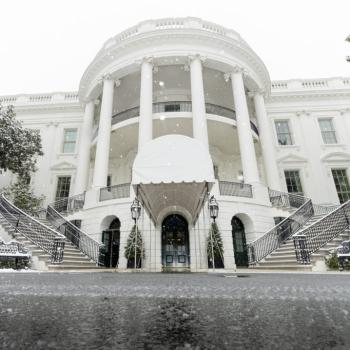
The metamorphosis of the traditional workspace into a flexible, hybrid model is akin to a tapestry in the making, with each thread representing a unique perspective, challenge, or solution. In a quest to unravel the nuanced intricacies of this transformation, I engaged in enlightening conversations with Shana Sweeney, Chief Human Resources Officer at SugarCRM, Kevin Anderson, Vice President of Enterprise Workplace Solutions at Upflex, and Carly Moore, Senior Director of Workplace Experience at Republic. Each brought forth a rich spectrum of insights, weaving a narrative that resonates with the broader corporate ethos in the unfolding era of hybrid and remote work.
The Symphony of Flexibility and Freedom
A chord that resonated across all three dialogues is the unprecedented level of flexibility and freedom that hybrid work affords. Carly Moore accentuated the essence of flexibility in promoting a healthier work-life balance, echoing Kevin Anderson’s emphasis on the freedom of choice that employees now enjoy. Shana Sweeney’s narrative on the global recruitment pool further underscores this theme, highlighting the liberation from geographical confines. This symphony of flexibility not only augments the personal and professional lives of employees but also expands the horizon for organizations in quest of talent.
The capacity for employees to choose their work environment, as Moore elucidates, fosters a sense of empowerment and autonomy. This empowerment, coupled with the global reach in recruitment as highlighted by Sweeney, and the increased free time emphasized by Anderson, orchestrates a conducive environment for both personal and professional growth. The resonance of these advantages across the board underscores the transformative impact of the hybrid work model on the organizational culture and employee well-being.
Combating Burnout: The Rejuvenation Rhythm
Moore’s insight into the alleviation of burnout through hybrid work struck a chord. The break from monotonous routines, long commutes, and the rigidity of the traditional workspace, as she pointed out, contributes to a rejuvenated and creatively enriched workforce. This resonates with Anderson’s emphasis on the increased free time that employees can leverage to explore other passions or side hustles, illustrating a rhythm of rejuvenation that hybrid work orchestrates.
The alleviation of burnout is not merely a personal benefit but reverberates through the organizational structure, enhancing overall productivity and fostering a culture of creativity and innovation. The break from the traditional 9-to-5 routine, as Moore suggests, is a catalyst for rejuvenation, unlocking a wellspring of creativity that is crucial for organizational growth and competitive advantage.
Bridging the Trust Chasm
Sweeney’s narrative on cultivating trust and satisfaction found an echo in Anderson’s discussion on the outdated paradigm of “looking busy.” The shift towards a results-driven culture, underscored by trust and output rather than mere physical presence, is a significant stride towards bridging the trust chasm that has often plagued traditional work environments.
This transition from a presence-centric to a performance-centric culture is a monumental shift in the organizational ethos. It not only fosters a culture of trust and accountability but also aligns with the modern-day emphasis on results and impact. The ripple effect of this trust extends to employee satisfaction and engagement, which are critical drivers of organizational success and employee retention.
The Challenge of Connectivity and Coordination
The hybrid model, while laden with benefits, presents a set of challenges, one being the potential disconnect among team members. Moore highlighted the dilemma of not catching teammates in the office, a sentiment shared by Sweeney concerning the intricacy of building relationships in a virtual realm. Anderson’s mention of the lack of coordination further accentuates this challenge. However, the solutions they proposed, from utilizing modern digital tools like Google Calendars and Slack to fostering intentional virtual interactions, provide a roadmap towards nurturing a connected and coordinated workforce.
The potential for misalignment and disconnect in a hybrid setup necessitates proactive measures to foster connectivity and coordination. The convergence of digital tools and intentional communication strategies, as outlined by the interviewees, is instrumental in bridging this potential disconnect, ensuring a seamless flow of communication and collaboration within the hybrid work ecosystem.
Equal Opportunities: The Digital Balance
Moore brought forth the challenge of maintaining equal opportunities for both in-office and remote employees. The propensity to favor those in physical proximity could lead to a proximity bias, inadvertently sidelining remote employees. This calls for a robust digital engagement strategy, manager training, and strong internal communication, ensuring a balanced and inclusive work environment.
The challenge of ensuring equal opportunities in a hybrid setup is a poignant aspect of the broader discourse on inclusivity and equity in the modern workplace. The strategies elucidated by Moore provide a pathway towards fostering a culture of inclusivity, where every employee, irrespective of their work location, has an equal opportunity to thrive and contribute.
External Support: The Technological Tango
The dialogues also touched upon the role of external support, especially in the realm of technology. Moore’s mention of utilizing external support for managing technology-related aspects, like a desk booking system, resonated with Anderson’s vision of transitioning from traditional brokers to integrators. Sweeney’s anticipation of advancements in virtual collaborative tools further accentuates the technological tango that companies need to engage in, to seamlessly navigate the hybrid work landscape.
The intertwining of technology and external support is a hallmark of the evolving hybrid work paradigm. The external expertise, especially in technology management, is a crucial asset for organizations as they navigate the complex landscape of hybrid work, ensuring a seamless integration of technology solutions that augment the hybrid work experience.
Envisioning the Future: A Bespoke Blueprint
As we venture into the future, Moore emphasized the bespoke nature of hybrid work strategies that companies would need to adopt, tailored to their unique needs and cultures. This dovetailed with Anderson’s futuristic scenario of AI-driven schedules and multiple careers, painting a picture of a dynamic and adaptable work environment. Sweeney’s envisioning of a diverse spectrum of work models further embellishes this future blueprint, indicating a vibrant and fluid work landscape ahead.
The future of hybrid work, as envisioned by the interviewees, is a canvas of endless possibilities, tailored to the unique contours of each organization. The bespoke nature of hybrid work strategies, coupled with the advancements in technology, paints a promising picture of a work culture that is as diverse and dynamic as the workforce it seeks to empower.
Overcoming Cognitive Biases
Navigating the transformation to a hybrid work model necessitates an acute awareness and mitigation of inherent cognitive biases. Confirmation bias and status quo bias are notable culprits that could potentially stymie the innovative adoption of new work paradigms.
Confirmation bias, the tendency to seek, interpret, and remember information in a way that confirms preexisting beliefs, can lead to a resistance against adopting hybrid work models, especially if there’s a prevailing belief in the superiority of traditional in-office work setups. Leaders and team members might inadvertently ignore or discredit the tangible benefits of hybrid work due to this bias, thereby obstructing the path towards a more flexible, inclusive, and productive work environment.
On the other hand, status quo bias, a preference for the current state of affairs, can also pose a significant hurdle. The shift to a hybrid model is a deviation from the traditional work culture, and this change could be perceived as a threat rather than an opportunity. The comfort of the known might overshadow the potential benefits of the unknown, leading to a reluctance in embracing the hybrid model. Overcoming this bias requires a concerted effort in fostering a culture of adaptability and continuous learning. It’s imperative to challenge the status quo, question longstanding practices, and embrace a mindset of continuous evolution.
Addressing these biases is not a mere act of acknowledgment but requires a robust strategy that includes education, open communication, and a conducive environment for feedback. Organizations need to foster a culture that encourages questioning the status quo and promotes an objective evaluation of new working models devoid of preconceived notions. By creating platforms for open discussions, encouraging feedback, and promoting a learning-oriented culture, organizations can significantly mitigate the effects of these biases, paving the way for a smooth transition to a hybrid work model that is tailored to meet the evolving needs of the workforce and the overarching organizational goals. Through these measures, companies can unlock the full potential of a hybrid work model, transcending traditional work paradigms and embracing a future of enhanced flexibility, collaboration, and productivity.
Conclusion
The insights from Shana Sweeney, Kevin Anderson, and Carly Moore provide a rich tapestry of perspectives on the evolving hybrid work model. The myriad benefits, from enhanced flexibility to combating burnout, juxtaposed with challenges like connectivity and equal opportunities, outline the contours of the hybrid work odyssey. When helping clients figure out their hybrid work models, I can attest that addressing these challenges aren’t easy, and requires an intentional, data-driven approach informed by external benchmarking and best practices. Still, as organizations tune their strategies to this new rhythm, the future of work is a harmonious blend of flexibility, innovation, and inclusivity, tailored to the unique needs and cultures of each entity.
Key Take-Away
Hybrid work’s tapestry unfolds, weaving diverse insights for a corporate evolution in collaboration and flexibility...>Click to tweet
Image credit: Edmond Dantès/Pexels
Originally published in Disaster Avoidance Experts on December 26,2023
Dr. Gleb Tsipursky was lauded as “Office Whisperer” and “Hybrid Expert” by The New York Times for helping leaders use hybrid work to improve retention and productivity while cutting costs. He serves as the CEO of the boutique future-of-work consultancy Disaster Avoidance Experts. Dr. Gleb wrote the first book on returning to the office and leading hybrid teams after the pandemic, his best-seller Returning to the Office and Leading Hybrid and Remote Teams: A Manual on Benchmarking to Best Practices for Competitive Advantage (Intentional Insights, 2021). He authored seven books in total, and is best know for his global bestseller, Never Go With Your Gut: How Pioneering Leaders Make the Best Decisions and Avoid Business Disasters (Career Press, 2019). His cutting-edge thought leadership was featured in over 650 articles and 550 interviews in Harvard Business Review, Forbes, Inc. Magazine, USA Today, CBS News, Fox News, Time, Business Insider, Fortune, and elsewhere. His writing was translated into Chinese, Korean, German, Russian, Polish, Spanish, French, and other languages. His expertise comes from over 20 years of consulting, coaching, and speaking and training for Fortune 500 companies from Aflac to Xerox. It also comes from over 15 years in academia as a behavioral scientist, with 8 years as a lecturer at UNC-Chapel Hill and 7 years as a professor at Ohio State. A proud Ukrainian American, Dr. Gleb lives in Columbus, Ohio. In his free time, he makes sure to spend abundant quality time with his wife to avoid his personal life turning into a disaster. Contact him at Gleb[at]DisasterAvoidanceExperts[dot]com, follow him on LinkedIn @dr-gleb-tsipursky, Twitter @gleb_tsipursky, Instagram @dr_gleb_tsipursky, Facebook @DrGlebTsipursky, Medium @dr_gleb_tsipursky, YouTube, and RSS, and get a free copy of the Assessment on Dangerous Judgment Errors in the Workplace by signing up for the free Wise Decision Maker Course at https://disasteravoidanceexperts.com/newsletter/.













